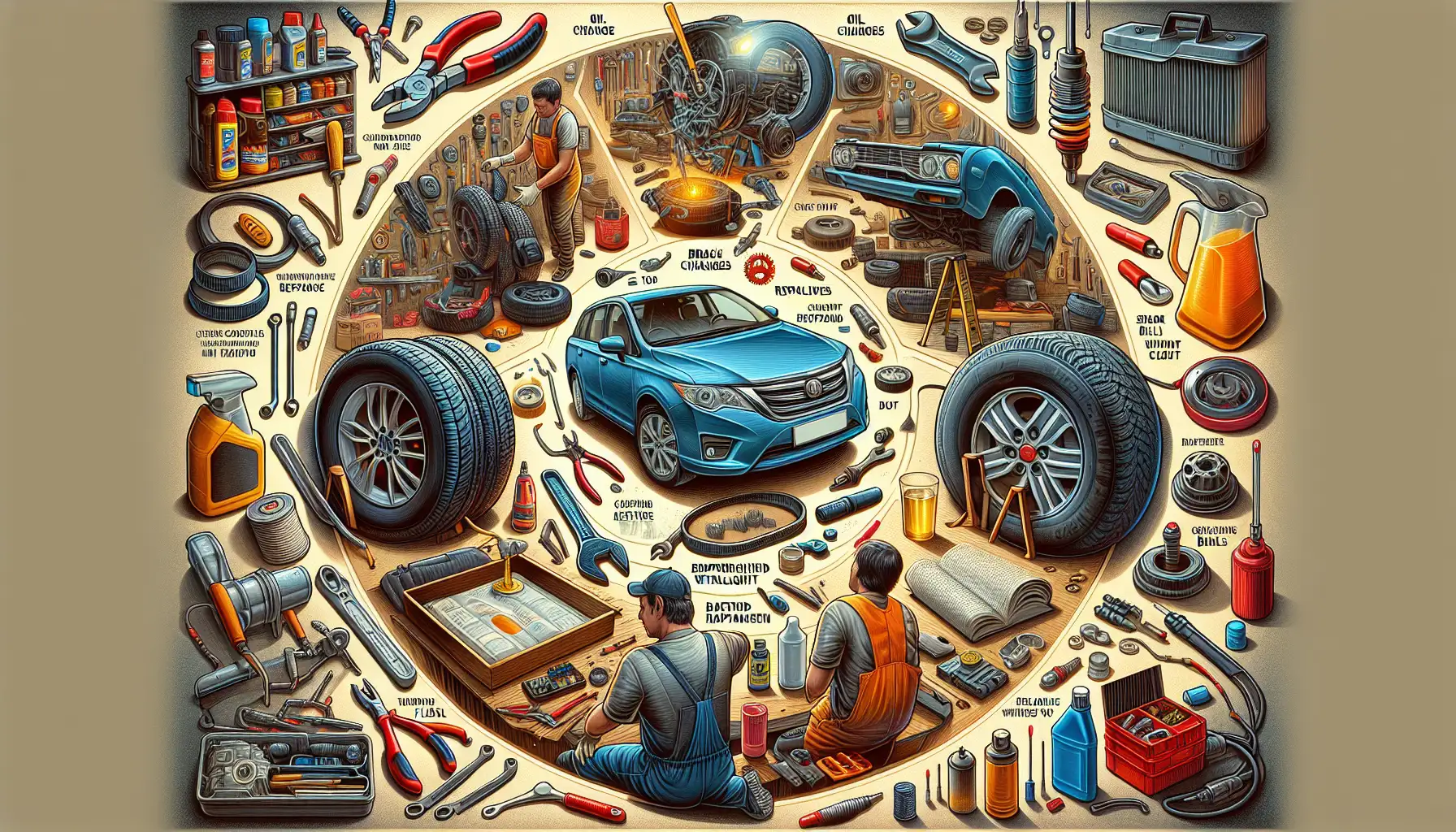Top 10 DIY Car Repairs You Can Do at Home
Discover simple car repairs you can tackle yourself to save money and keep your vehicle in top shape.

Maintaining your car doesn't always require a trip to the mechanic. With a little know-how and some basic tools, you can perform several car repairs at home. Not only does this save money, but it also extends the life of your vehicle. Here, we explore the top 10 DIY car repairs you can do yourself.
1. Changing the Oil
Regular oil changes are crucial for engine health. To change your oil, you'll need an oil filter wrench, a socket wrench, an oil catch pan, and new oil and filter. Start by warming up your car, then drain the old oil, replace the filter, and add new oil. Always dispose of the old oil responsibly.
2. Replacing Air Filters
Air filters should be replaced every 12,000 to 15,000 miles. Locate the air filter box, open it, and replace the old filter with a new one. This simple task can improve your car's fuel efficiency and performance.
3. Changing Spark Plugs
Spark plugs ignite the fuel-air mixture in your engine. Over time, they wear out and need replacement. You'll need a spark plug socket and a ratchet. Remove the old spark plug, check the gap on the new one, and install it. This can improve engine performance and fuel economy.
4. Replacing Windshield Wipers
Worn-out wipers can reduce visibility during rain. To replace them, lift the wiper arm, remove the old blade, and attach the new one. This is a quick and easy fix that enhances safety.
5. Changing Brake Pads
Brake pads wear down over time and need replacing to ensure safe stopping. You'll need a jack, lug wrench, and a C-clamp. Remove the wheel, take out the old brake pads, compress the caliper piston, and install new pads. Always check your car's manual for specific instructions.
6. Replacing a Car Battery
If your car struggles to start, it might be time for a new battery. You'll need a wrench to disconnect the terminals. Remove the old battery, clean the terminals, and install the new battery. Ensure the terminals are tightly connected.
7. Fixing a Flat Tire
Knowing how to fix a flat tire is essential. Use a jack to lift the car, remove the lug nuts, and replace the flat tire with a spare. Tighten the lug nuts in a crisscross pattern to ensure even pressure.
8. Replacing Headlights or Taillights
Driving with a broken headlight or taillight is dangerous and illegal. To replace them, access the bulb through the engine bay or trunk, remove the old bulb, and install a new one. Check your car's manual for specific instructions.
9. Flushing the Radiator
Flushing your radiator helps prevent overheating. You'll need a radiator flush solution, a hose, and a catch pan. Drain the old coolant, flush the system with water and the solution, and refill with new coolant. This should be done every 30,000 miles.
10. Replacing a Fuel Filter
A clogged fuel filter can affect engine performance. To replace it, relieve the fuel system pressure, remove the old filter, and install a new one. This task requires caution due to the flammable nature of fuel.
Conclusion
By tackling these DIY car repairs, you can save money and keep your vehicle running smoothly. Always consult your car's manual for specific instructions and safety precautions. With practice, you'll gain confidence and skills that can be invaluable in maintaining your car.
 CarChooser
CarChooser